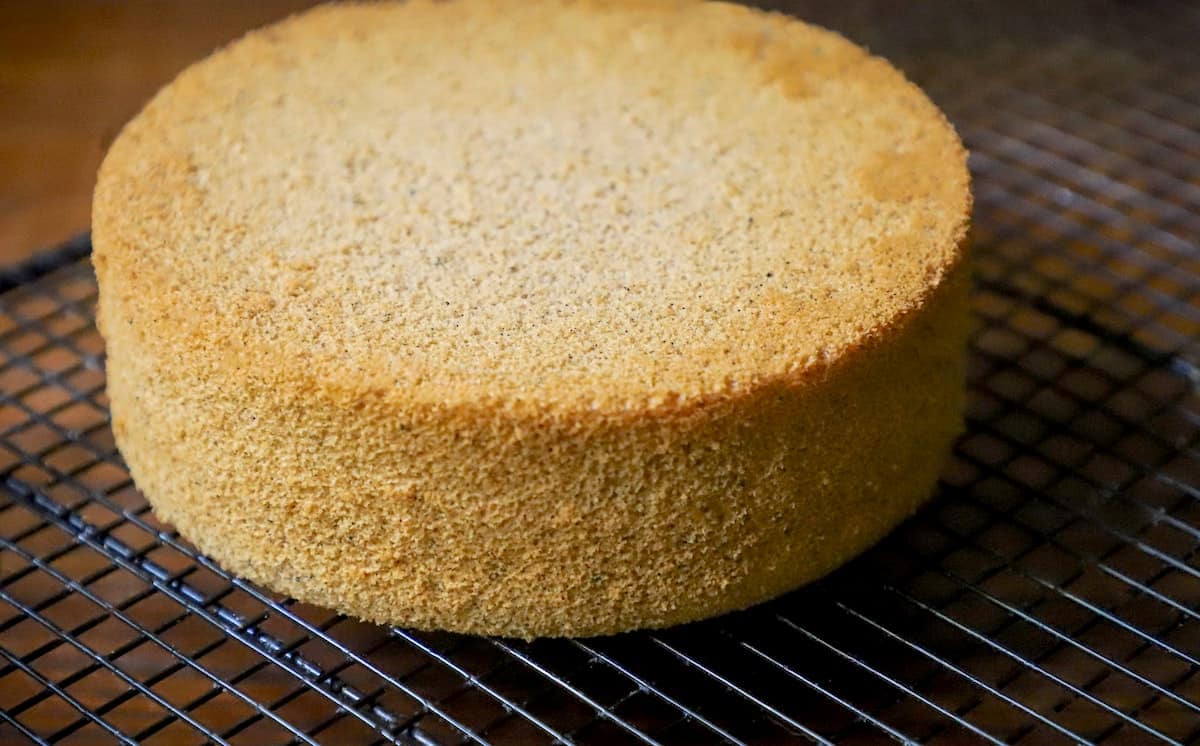The smell given off by the cake you are baking fills your entire house, you are impatient to see it and taste it, it is time to remove it from the oven and let it cool down. But, at the moment of unmolding and cutting it, surprise! the cake is raw inside and suddenly you feel that all the money and time invested in that recipe has been for nothing… Well, you should know that, in In most cases, when a sponge cake remains raw inside, it is not usually because of a wrong recipe, but because of having followed the wrong steps or, without realizing it, not having calculated the quantities correctly.
Stop complaining, keep reading this article and find out why the cake is raw inside to prevent it from happening again. Getting a perfect fluffy cake is possible!
Function and ideal temperature of the oven for biscuits
There are many recipes that indicate the temperature at which we must activate the oven to proceed with baking it, however, many are also those that do not specify this information, leading us to experiment and obtain a raw sponge cake inside. Why does this happen? Very simple, the ideal temperature is 170-180 ºC, neither more nor less, both to bake a cake and to make it fluffy. In general, when the cake sinks in the center and is raw inside, it indicates that the temperature used is below the ideal. Likewise, it should be noted that not all ovens reach the temperature in the same way, nor do they reach the programmed degrees, so it is essential to know the appliance with which we are working and test until reaching the optimum temperature.
The degrees are not the only factor to take into account when it comes to programming the oven, since the function we choose plays a crucial role. Thus, for the cake to rise correctly and not be raw, we must preheat the oven with heat from above and below, but cook the cake only with heat from below. This way, the cake will rise from the bottom, cook properly on the inside, and there won’t be any raw parts left. By keeping the heat up and down throughout the baking, what we are doing is cooking the cake on the outside, generating a hard crust that prevents the inside from cooking. Only when there are 10 minutes left to finish cooking can we activate the heat on top if we want the upper part to be golden?
And the position of the cake? It also influences! It is best to use a rack to place the mold on top and place it right in the middle of the oven.
Type of mold suitable for the size of the cake
Although it seems obvious, selecting a suitable mold for the quantities of the ingredients is essential to ensure that it rises correctly. If we opt for a mold that is too large, the result will be a compact, low and not spongy cake, while if we choose a very small one it is possible that we will find cake dough outside the mold and the cake sunken in the center, leaving it raw inside. In general, sponge cake recipes are usually designed for medium molds, about 20-25 cm in diameter. However, if you have doubts, ask the cook!
To give you an idea, a cake with a medium-sized mold usually takes about 250 grams of flour, while a cake for a small mold half. Here are sample recipes that are very easy to make:
- Medium mold: caramel cake
- Small mound: vegan chocolate cake
Have you calculated the quantities of the ingredients correctly?
First of all, it is important to emphasize the importance of using all the ingredients at room temperature. If any of them is too cold or, on the contrary, very hot, it can disturb the homogeneity of the dough and prevent it from taking in the air and body it needs. For this reason, in our recipes we always recommend preparing the ingredients before starting to cook, both to guarantee an optimal temperature and to avoid another of the most common errors that explain why a cake is raw inside. Not weighing the ingredients to use the amount indicated in the recipe can lead to an excess of flour, for example, causing the cake to rise unevenly, or a deficiency, obtaining a raw or sunken cake in the center.
If the problem is that the measurements used in the recipes are cups and tablespoons, check the following articles to find the equivalents in grams:
- How much is a cup in grams?
- How much is a tablespoon of flour in grams?
- How much is one tablespoon of sugar in grams?
Flour and baking powder, last and gently!
When do you usually add the flour? Do you sit it first? Do you mix it with baking powder? If you don’t follow an order, or pass it through the strainer along with the baking powder, mistake! Regardless of the kitchen utensil you use to mix the rest of the ingredients for your cake, the flour should always be mixed with the chemical yeast, sifted and integrated at the end using a wooden spoon or spatula, and making gentle enveloping movements. Why? Very easy, to give air and body to the dough. The exception lies in those recipes with liquids such as milk, in which the flour must be alternated with the liquid in question.
By sifting the flour, we aerate the product and provide the dough with extra softness, which is why skipping this step can lead to obtaining a compact or raw sponge cake. Likewise, the chemical yeast, some boosting powders that are activated by the heat of the oven, must be sifted together with the flour to perform its function correctly. If instead of Royal type yeast you usually use baking soda, the rule is the same.
Does the type of flour influence?
Clearly yes! The best flours for baking biscuits and preventing them from being raw inside or not very spongy are those called “soft”, that is, with a lower percentage of gluten. In general, they are marketed under the name of “pastry flour” or “rising flour”, but any flour that meets this characteristic is suitable for the preparation of cakes and cakes.
How to incorporate the eggs so that the cake is not raw?
As we said, the eggs must be at room temperature and be of the best possible quality. That said, how do they add to the dough? We have two options:
- Whole eggs: always one at a time. Until the first egg has not been completely incorporated into the dough, the second is not added, and so on until they are finished. In addition, when beating the egg to integrate it, it is essential to do it with energy to aerate the dough as much as possible.
- Separating the white from the yolk. In this case, the egg whites should be beaten until stiff and added just before the flour. The yolks, one at a time. When beating the egg whites, the air that we provide to the dough is even greater, this being an infallible trick when making sponge cakes.
By now, you may have noticed that the word “air” appears prominently, right? This is so because here lays one of the keys to making the cake fluffy and well done inside. For the steps prior to the incorporation of flour, you can use electric rods or a blender in order to guarantee this “air”.
Have you opened the oven ahead of time?
One of the most common mistakes that lead to a cake that is raw inside or sunken in the center is this: opening the oven too soon. We said that chemical yeast, or baking powder, is activated by the heat of the oven, and when it is opened when it has not yet finished its work, the heat chain is broken and, therefore, the cake does not continue to rise properly.
Ideally, do not open the oven during the first 30 minutes. Once this time has passed, and as long as you see through the glass that the cake is almost ready, you can open it to start checking the degree of cooking.



